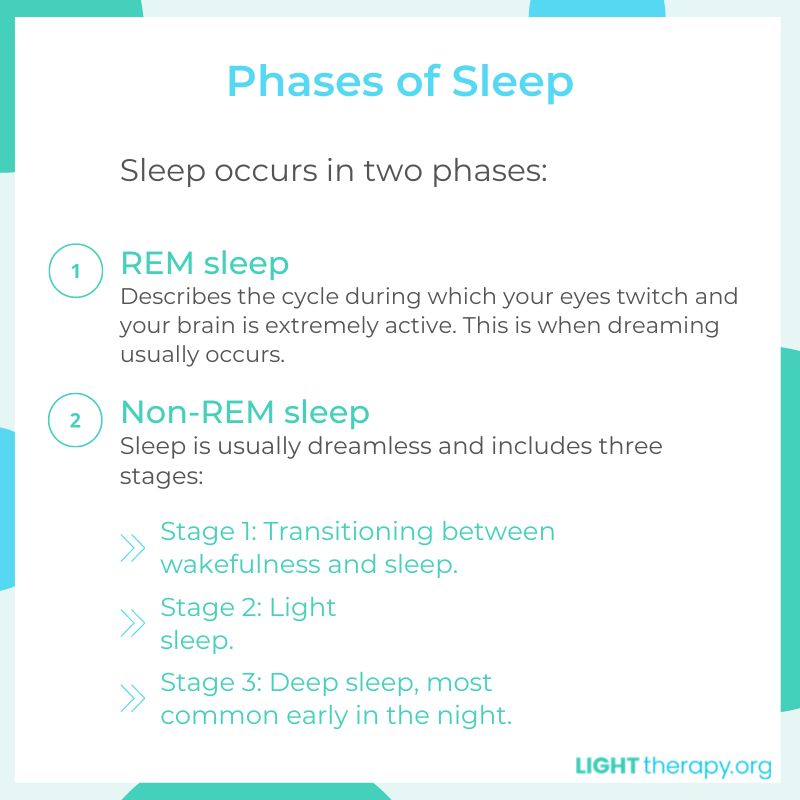Light Therapy for Sleep: Everything You Need To Know
Sleep is vital to the health and well-being of our entire bodies. It affects our moods, our immune systems, and even our lifespan. But for various reasons, sometimes this much-needed restorative is hard to obtain.
Can light therapy for sleep be effective? The answer is yes!
What Is Light Therapy?
Light therapy is a noninvasive, nonsurgical treatment that isolates specific wavelengths of light and shines them onto the body to encourage specific responses, such as regeneration and healing.
Therapy with light has been around for decades. Until fairly recently, the term “light therapy” implied massive, expensive machines in medical spas and some physicians’ offices. But advancements in technology have made light therapy more accessible to the public, especially through the development of devices intended for home use.
Light therapy has a broad range of applications. It can target precise areas of the body for the treatment of acne, cold sores, and wounds and burns, or it can diffuse over the entire body for systemic effects such as increased energy and athletic performance.
What Is Sleep?
Sleep seems simple enough; it’s what we do each night when we climb into bed and close our eyes. It’s an altered state of consciousness that provides rest and restoration for our body and mind.
Our internal body clock controls when we’re awake and when we sleep. There are many variables that can affect this internal clock, like sleep schedule, caffeine intake, napping, and exposure to light.
While children and older individuals have differing sleep needs, most adults require 7–9 hours of restful sleep each night.
The Importance of Sleep
Lack of sleep doesn’t just leave you feeling tired in the morning. Sleep deprivation can also increase your risk of depression, heart attack, stroke, diabetes, and hypertension. It also makes driving a vehicle less safe and can have a major impact on your productivity and quality of life.
Sleep/Wake Cycles
The body’s “internal clock” is called the circadian rhythm. This rhythm is about 24 hours in duration, corresponding to the 24-hour day.
Your circadian rhythm affects all the body’s organs. For example, in the evenings your brain produces more of a hormone called melatonin to promote sleep, but your cortisol levels rise in the morning to promote wakefulness.
Phases of Sleep
Sleep occurs in two phases: rapid eye movement (REM) sleep and non-REM sleep. Studies show that most adult sleep cycles last about 90 minutes, and we move through four to six cycles each night. Night wakings usually occur between sleep cycles.
REM sleep describes the cycle during which your eyes twitch and your brain is extremely active. This is when dreaming usually occurs.
Non-REM sleep is usually dreamless and includes three stages:
- Stage 1: Transitioning between wakefulness and sleep.
- Stage 2: Light sleep.
- Stage 3: Deep sleep, most common early in the night.

Can Light Therapy Help Improve Sleep?
Sleep, wakefulness, and melatonin production rely heavily upon the body’s response to cycles of light and darkness. This means light therapy holds great potential for people with sleep problems.
Below are several common types of sleep issues that light therapy can help address.
1. Circadian Rhythm Sleep Disorders
Circadian rhythm disorders cause sleep disruptions, insomnia, and/or daytime sleepiness. There are several different types.
Advanced Sleep-Wake Phase Disorder
ASWPD causes people to fall asleep in the early evening, resulting in a waking up between 2 and 5 a.m. Using bright light therapy in the early evening can help stimulate wakefulness until a typical bedtime, effectively treating this disorder.
Delayed Sleep-Wake Phase Disorder
Delayed sleep-wake phase disorder results in falling asleep and waking up much later than normal. Clinical studies and the American Academy of Sleep Medicine (AASM) recommend using bright light therapy soon after waking up in the morning to treat this disorder.
Free-Running or Non-24-Hour Sleep-Wake Rhythm Disorder (N24)
This sleep disorder causes sufferers to get tired at a later and later time each night, shifting their sleep cycle forward. Although this experience is more common in the blind, the AASM still recommends light therapy in the early morning hours as an effective treatment.
Jet Lag
Jet lag is a circadian rhythm disorder that occurs in people who have traveled across multiple time zones without taking time to adapt their bodies. When traveling east, bright light therapy in the morning may help, whereas bright light therapy in the evening may help when traveling west.
Shift Work Disorder
Many jobs require workers to sleep at odd hours and work overnight shifts. While this is necessary to keep our modern society running, it can greatly interfere with sleep cycles. Bright light therapy in the early evening can help those who need to stay up all night for work.
2. Insomnia
Insomnia occurs when someone experiences difficulty getting to sleep or staying asleep. Sometimes insomnia occurs in conjunction with a mental health issue like depression or dementia. Light therapy may be helpful in treating insomnia by resetting the body’s circadian rhythm during the day and/or by addressing mental health disorders.
3. Seasonal Affective Disorder (SAD) and Depression
Sleep disturbances are associated with many mental health disorders, including depression and seasonal affective disorder (SAD). One Johns Hopkins study even showed that otherwise healthy people may have an increased risk of depression when they experience repeated sleep interruptions.
Fortunately, many studies show that light therapy is extremely effective for both generalized depression and seasonal depression.
Consult With Your Physician
Talk with your physician about light therapy if you think this treatment might assist you in developing healthy sleep patterns.
If you currently take a pharmaceutical sleep aid, be sure not to replace any prescription medication with light therapy without first speaking with your prescribing physician.